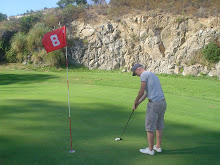After my presentation, where I told about my theme, approach, summary of my weblog, first results and the next step I get some crituques. Namely:
- integrate every step I made for the different studies
- design also with one paramter, like best orientation
- design a new form for the lightpipe
- look to every date and time in the year, also for an overcast and sunny sky
- maybe use moving lightpipes in the roof
I think it is clearly what to do this comming weeks. Thursday I had a meeting with Truus and I hope she can push me in the right way of my process.

1 comment:
Some clarification so as to try to avoid misunderstandings of the feedback you received after the presentation:
- the list of tasks you’ve posted here for your further work needs to be focused on your design research goals. If you are still interested in providing daylighting via lightpipes for a set of underground spaces – rather than in designing lightpipes – then it’s probably better to first use the type of pipes and the type of space geometry accommodated by the software you’re using, and only after that consider whether the software’s limitations are seriously impacting the quality of your design.
Instead of movable lightpipes, you can consider heliostats for catching light from different directions and multiple pipes over different parts of each space with adjustable lids or louvers for accommodating varying outdoor light intensity (due to changes in weather, time of day and day of year), lenses and/or reflectors for redirecting light within the spaces, and so on. These technical devices don’t need to be modeled in detail at this stage, however, since changing the intensity of available light entering into each pipe can simulate their effects reasonably well (assuming this can be varied individually in the software) except for redistribution of light inside the spaces.
So rather than getting bogged down in trying to study all of these factors in detail, it seems better to consider the relationship between what you’re learning about lightpipes and what you’re aiming to accomplish architecturally.
AC
Post a Comment